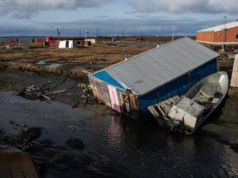Meteorologists weigh in on the latest forecasts for Harvey’s path.
The latest forecast paths show Hurricane Harvey is likely to linger over the Texas coast over the weekend after it makes landfall Friday (Aug. 25) before making a move or falling apart. Where the storm goes next is still very much a guessing game at this point.
Still, storm path models show Harvey drifting up the Texas coast toward Louisiana and possibly dipping out over the Gulf of Mexico, where warm water could provide fuel for the storm to regroup. Those ones look particularly worrisome for us in New Orleans. Do we have cause to be concerned?
Yes and no, said Bryan Norcross, senior hurricane specialist for the Weather Channel.
Norcross said it is still far too early to tell where Harvey is going to head next week if it is able to wrestle itself free from two high pressure areas — one in the east and one in the west — working to trap the system over the Texas coast. That said, tracking the eye alone doesn’t reveal the kind of weather we may or may not get in New Orleans, he said.
Norcross pointed to the massive, curved arms of tropical rain that form Harvey’s outer bands. Those extend rain and flood risk hundreds of miles from the center of the storm, he said.
„People in New Orleans need to quit looking at the center of the storm and feeling some sort of relief because it’s in Texas, “ Norcross said. „That doesn’t mean it can’t rain really, really hard elsewhere.“
In other words, New Orleans is probably in for a lot of rain regardless of whether Harvey’s center moves closer or farther away in coming days.
Still, where the storm goes could clarify how much rain New Orleans can expect. The National Weather Service has predicted the city could see between 5 and 10 inches of rain over the next week, with the heaviest rainfall starting late Sunday or Monday. Individual forecasters have been more hesitant to make definitive rainfall predications.
WVUE Fox 8 Chief Meteorologist David Bernard said Harvey has the potential to push into Texas, moving beyond the coast and lingering inland.
„The further inland Harvey gets the faster it’s going to weaken, “ Bernard said.
Bernard said a „big wall“ of high pressure is currently hanging over the southwest U. S. and Mexico. Several models show the westerly high pressure pushing Harvey back toward the coast and out over the Gulf of Mexico where it could make a second landfall near Houston sometime next week.
Bernard said it is too early to make any accurate rainfall predictions, but New Orleans „should be preparing for heavy rains.“
„The exact position and intensity of the storm Sunday, Monday and into Tuesday will determine how much rain we get, “ Bernard said.
Jeff Weber, a meteorologist with the University Corporation for Atmospheric Research in Boulder, Colo., noted the 21 precipitation forecast models tracked by the National Oceanic and Atmospheric Administration vary wildly in rainfall predictions for New Orleans. Almost all the forecast models show heavy rainfall starting in earnest on Monday, but the estimates for the total rainfall through next Saturday range from 1.73 inches to 9.58 inches.
Weber said New Orleans‘ position northeast of the storm sets it up for a „double whammy“ as rain bands hit and then drag across the region as the storm turns. Harvey’s slow movement also gives it time to accumulate and pull in moisture, making it even more of a rain and flooding threat, he said.
Generally, weather moves from west to east as it gets caught up in westerly winds that run across the country,
All that adds up to a „period of time where you guys get a ton of rain, “ Weber said.
As for the storm’s path, Norcross with the Weather Channel emphasized a lot can change in two days. He likened the atmosphere to a river and a hurricane to a floating wood block. Strong currents pull hurricanes west or east, or break them apart, much like a wood block floating on a river, he said.
The atmosphere Harvey has developed in is more like a lazy river, with no clear or forceful currents, he said. We have no idea where the wood block will end up in a few days, he said.
New Orleans should be watching regardless of where Harvey goes, he said. He noted parts of Terrebonne Parish were already getting hit Friday with severe storm cells produced by Harvey’s outer bands.
„Until this is out of the region everyone in Louisiana and eastern Texas needs to be on alert, “ Norcross said. „It’s not necessarily going to be the case that the closer you get to the center of the storm the worse it is.“






